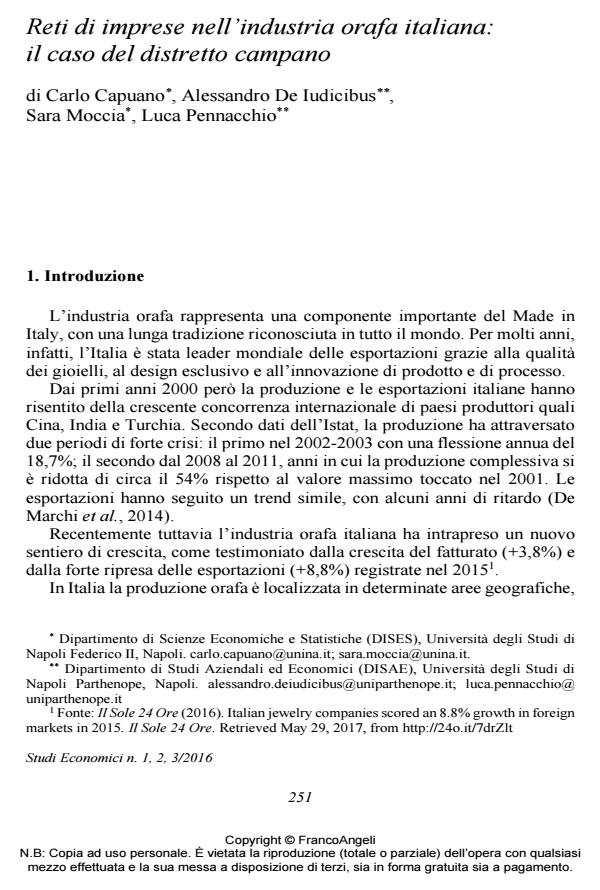Reti di imprese nell’industria orafa italiana: il caso del distretto campano
Journal title STUDI ECONOMICI
Author/s Carlo Capuano, Alessandro De Iudicibus, Sara Moccia, Luca Pennacchio
Publishing Year 2017 Issue 2016/118-119-120
Language Italian Pages 20 P. 251-270 File size 237 KB
DOI 10.3280/STE2016-118015
DOI is like a bar code for intellectual property: to have more infomation
click here
Below, you can see the article first page
If you want to buy this article in PDF format, you can do it, following the instructions to buy download credits

FrancoAngeli is member of Publishers International Linking Association, Inc (PILA), a not-for-profit association which run the CrossRef service enabling links to and from online scholarly content.
The jewelry industry has a long tradition and a relevant role in the Italian economy. The sector is organised according to the productive arrangement of the industrial district. As for the jewelry district in Campania, the present work pursues the twofold objective of identifying the factors inducing enterprises’affiliation to the Tarì, the principal consortium of the district, and the consequent benefits. The empirical analysis documents that enterprises affiliated to the Tarì are larger and their costs have a greater incidence on the total level of production compared to the other enterprises. The principal benefit of participation is the reduction of the production costs, particularly of the costs for the services. However, there are no benefits in terms of revenue growth. Some implications for regional policy makers are discussed in the conclusions.
Keywords: Jewelry, industrial districts, clusters of firms, regional economy
Jel codes: L14, L23, L25, L52, O20
- Territorial distribution of economic activities and resilience in Vicenza’s jewelry industry David Celetti, in R-Economy /2022 pp.384
DOI: 10.15826/recon.2022.8.4.029
Carlo Capuano, Alessandro De Iudicibus, Sara Moccia, Luca Pennacchio, Reti di imprese nell’industria orafa italiana: il caso del distretto campano in "STUDI ECONOMICI " 118-119-120/2016, pp 251-270, DOI: 10.3280/STE2016-118015